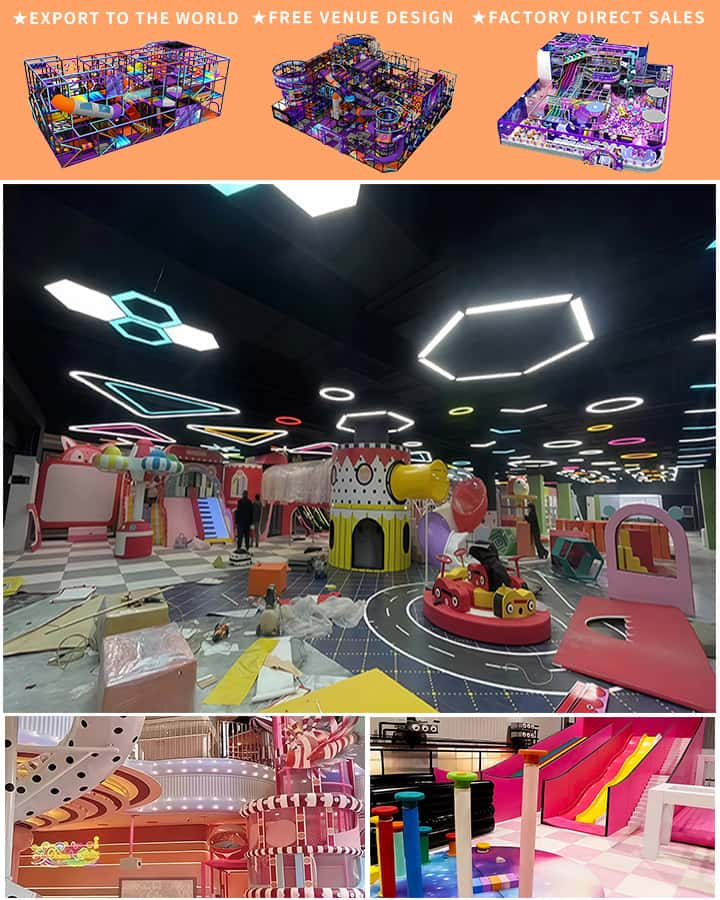Starting a children’s indoor playground can be an exciting and rewarding venture. As families look for safe, engaging places for their kids to play, an indoor playground offers a great solution, especially in areas with harsh weather or limited outdoor space. Here are the steps you need to consider to launch your own indoor playground successfully.
Market Research
Before diving into any business, it’s crucial to conduct thorough market research. Identify your target audience, which may include toddlers, school-age children, or teenagers. Understand the demographics of the area where you plan to set up. Look at local competitors to understand what they offer and identify gaps in the market that you can fill.
Business Plan
Create a detailed business plan outlining your vision, mission, and goals. This plan should include:
- Executive Summary: A brief overview of your business.
- Market Analysis: Insights from your market research.
- Business Model: How you intend to generate revenue (entrance fees, memberships, parties, etc.).
- Marketing Strategy: How you plan to attract and retain customers.

- Financial Projections: Revenue forecasts, initial costs, and break-even analysis.
- Operational Plan: Day-to-day operations, staffing needs, safety protocols, and more.
Location and Design
Choosing the right location is vital for the success of your indoor playground. Consider factors such as visibility, accessibility, foot traffic, and parking facilities. Once you secure a location, focus on creating an inviting and safe environment. Engage a professional designer who specializes in indoor play areas to ensure the layout promotes fun while meeting safety standards.
Safety Measures
Safety should be a top priority. Ensure all equipment meets safety standards and is regularly maintained and inspected. Hire certified staff trained in first aid and CPR. Create clear safety guidelines and ensure parents understand them before their children start playing.
Licensing and Permits
Obtain all necessary licenses and permits required by local, state, and federal regulations. This may include a general business license, health department permits, fire department inspections, and zoning approvals. Consult with a legal expert to ensure you comply with all regulations.
Equipment and Supplies
Invest in high-quality, age-appropriate play equipment. Include slides, climbing structures, ball pits, trampolines, and interactive games. Ensure the materials used are non-toxic and durable. Regularly update and maintain the equipment to guarantee safety and keep the playground appealing.
Staffing
Hire friendly, energetic, and responsible staff who enjoy working with children. Conduct background checks and provide comprehensive training on customer service, safety protocols, and emergency procedures. Having well-trained staff will enhance the experience for both children and parents.
Marketing and Community Engagement
Develop a marketing strategy to attract customers. This could include social media campaigns, partnerships with local schools and community centers, and hosting events like birthday parties and open houses. Word-of-mouth is powerful; make sure parents and kids have a memorable experience.
Financial Management
Keep a close eye on your finances. Set up a reliable accounting system to track income, expenses, and profitability. Budget wisely for initial setup costs and ongoing operational expenses. Seek advice from financial advisors if needed.
Evaluation and Improvement
Continuously evaluate the performance of your indoor playground. Gather feedback from customers to identify areas for improvement. Stay updated with industry trends and innovations to keep your playground relevant and competitive.
Starting a children’s indoor playground requires careful planning, dedication, and a passion for creating a fun, safe environment for kids. By following these steps, you can build a successful business that brings joy to children and peace of mind to parents.




